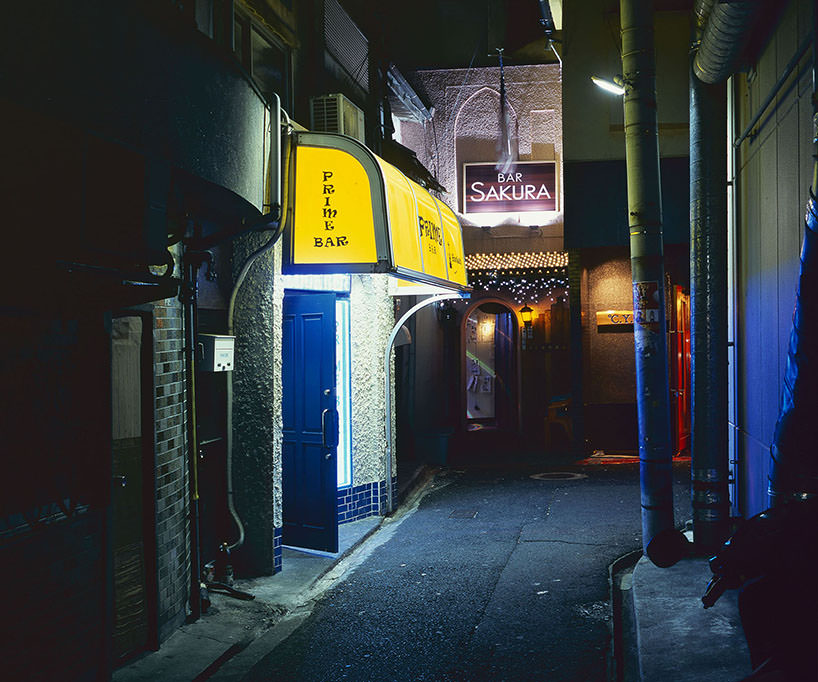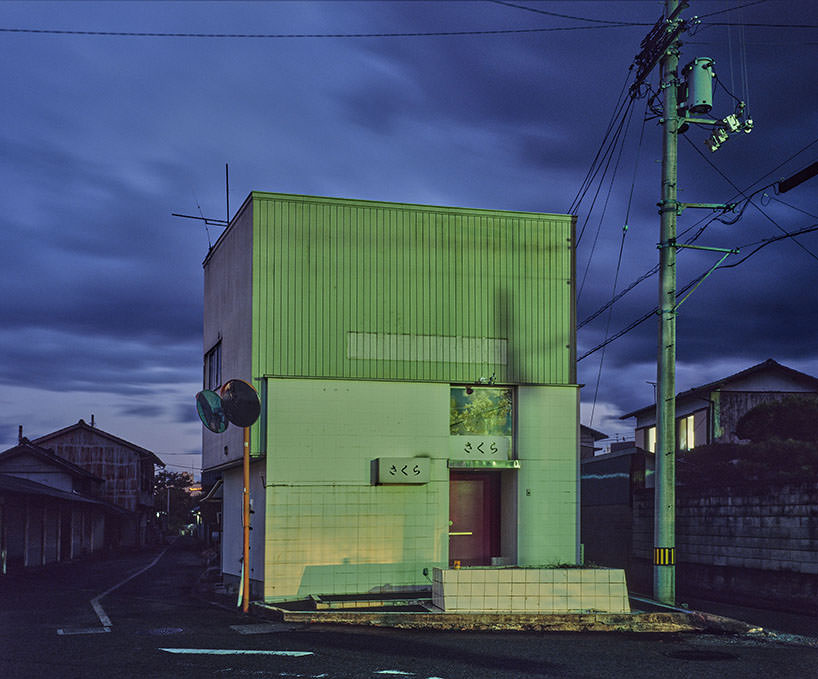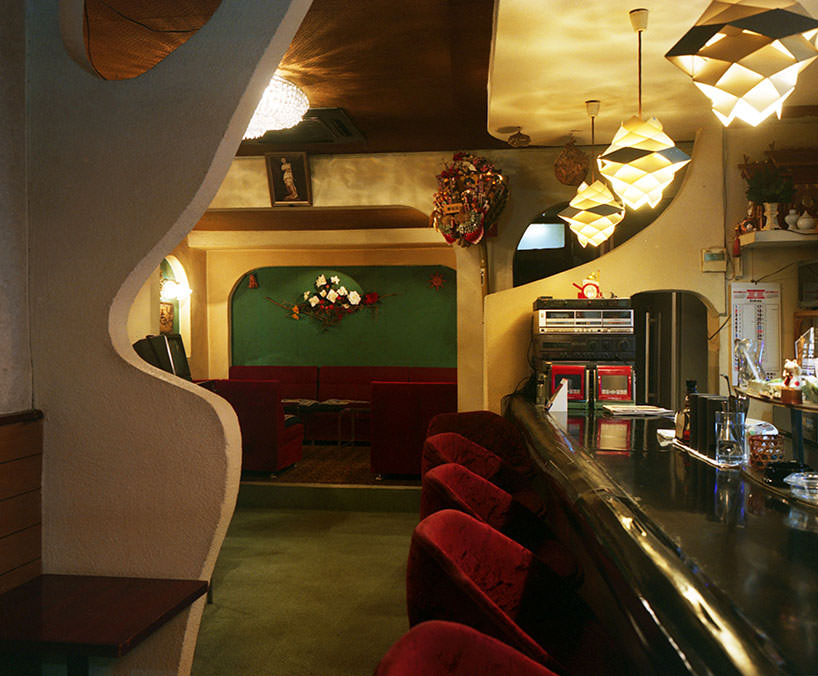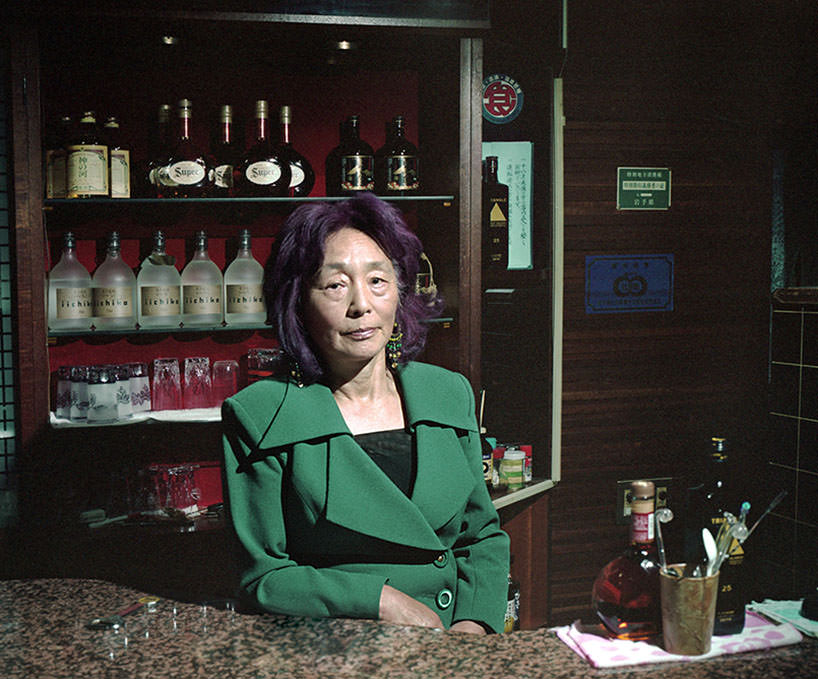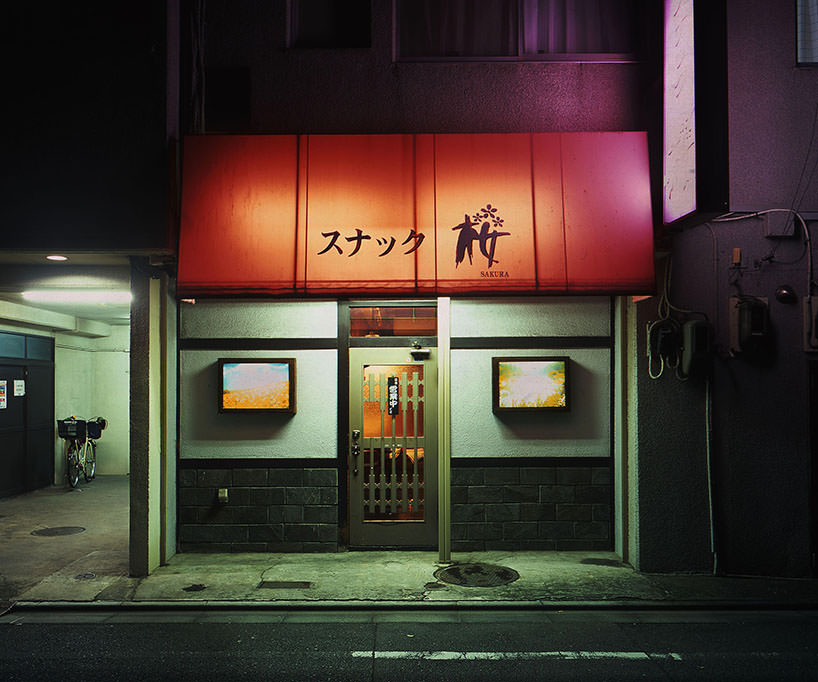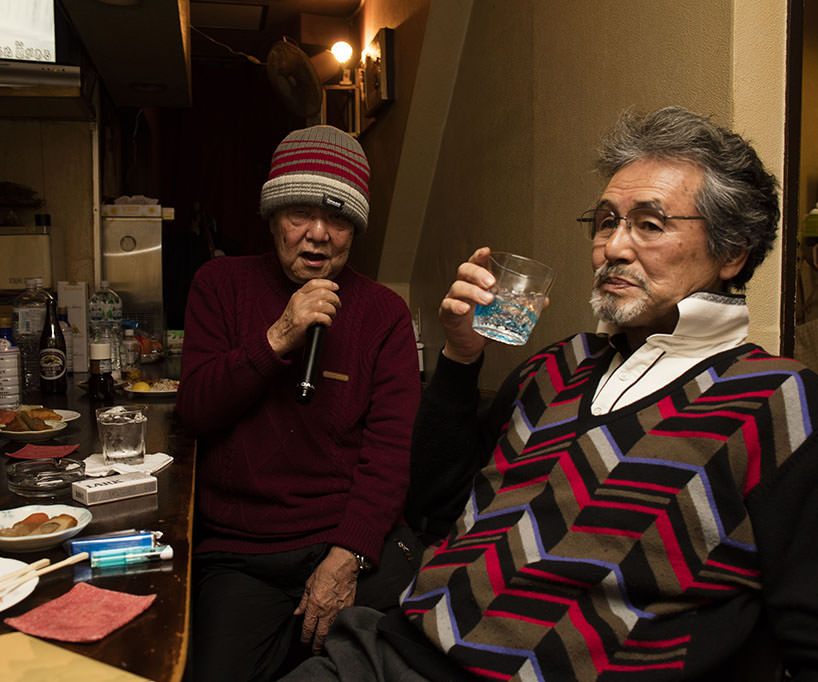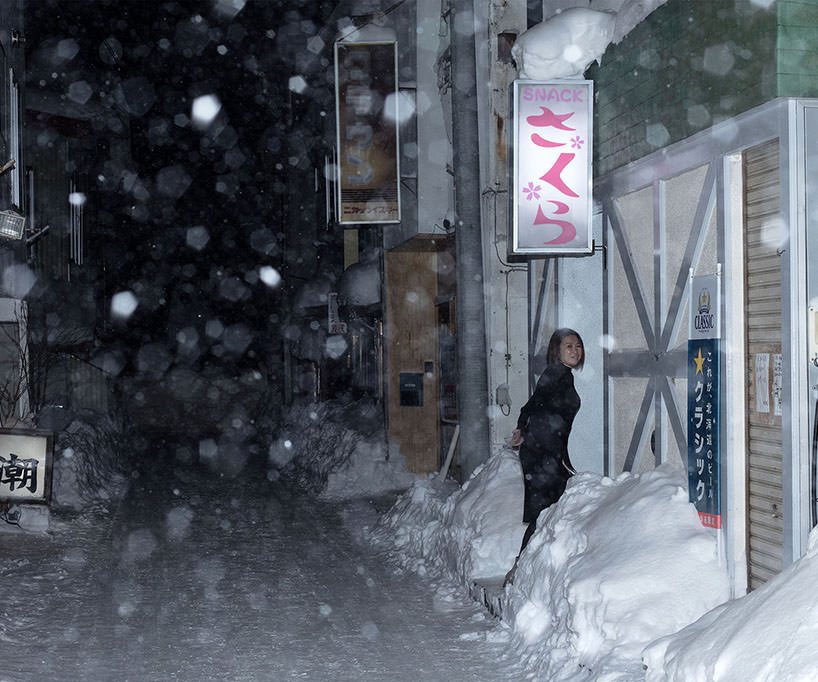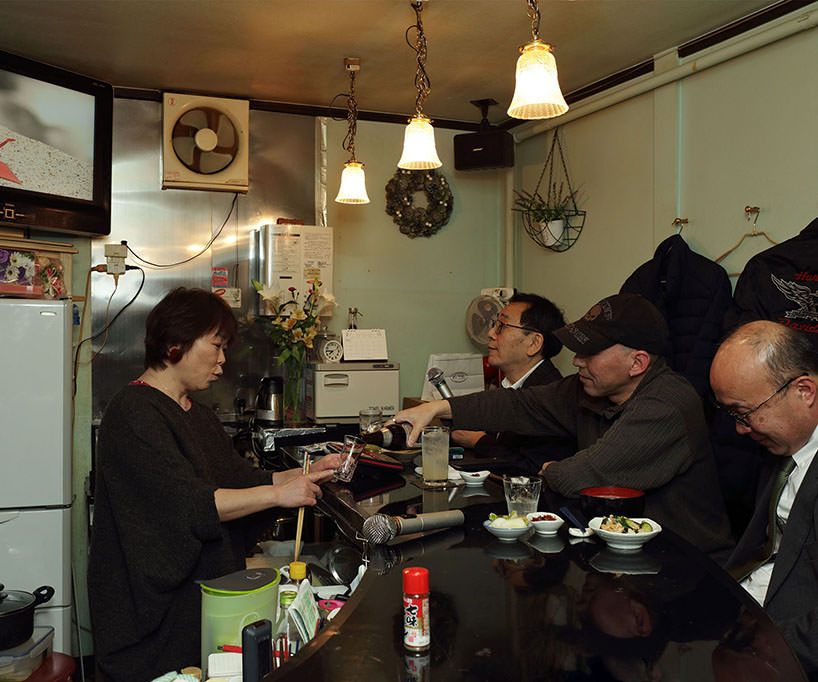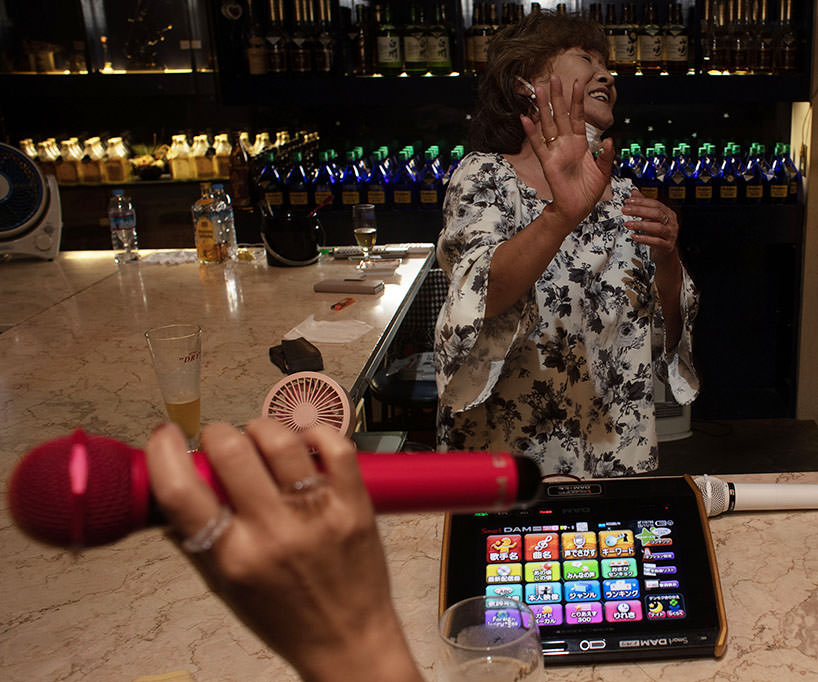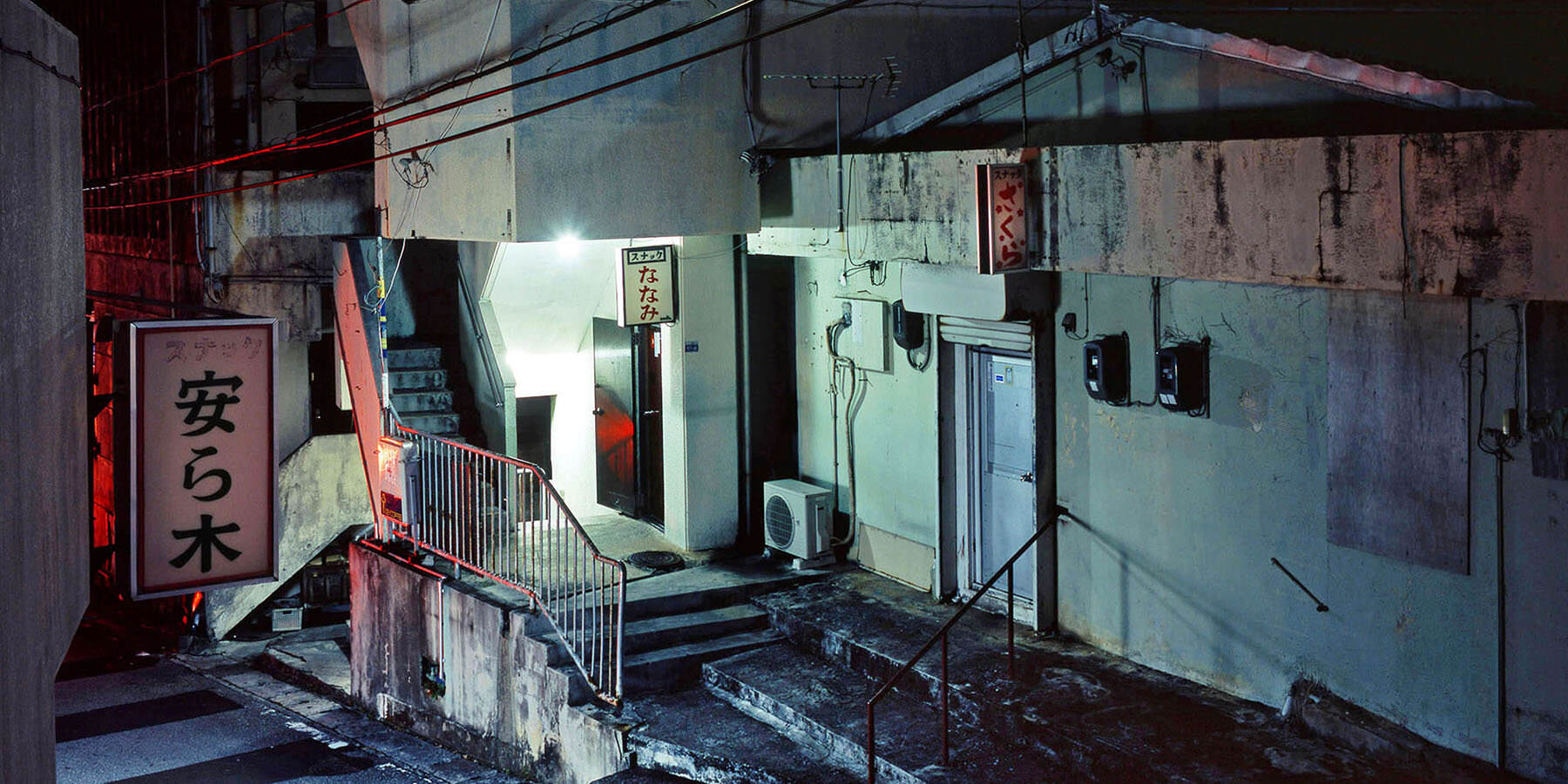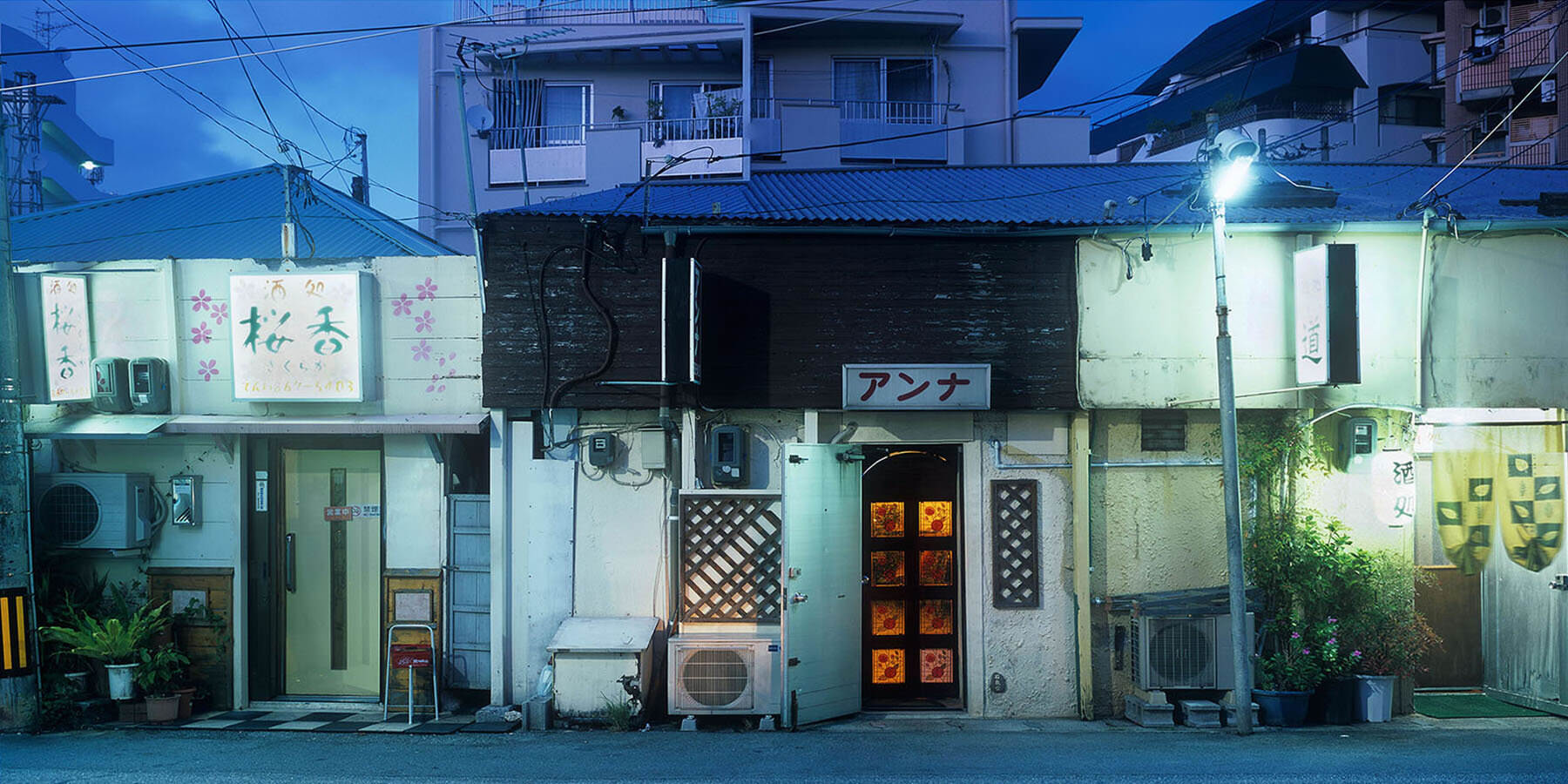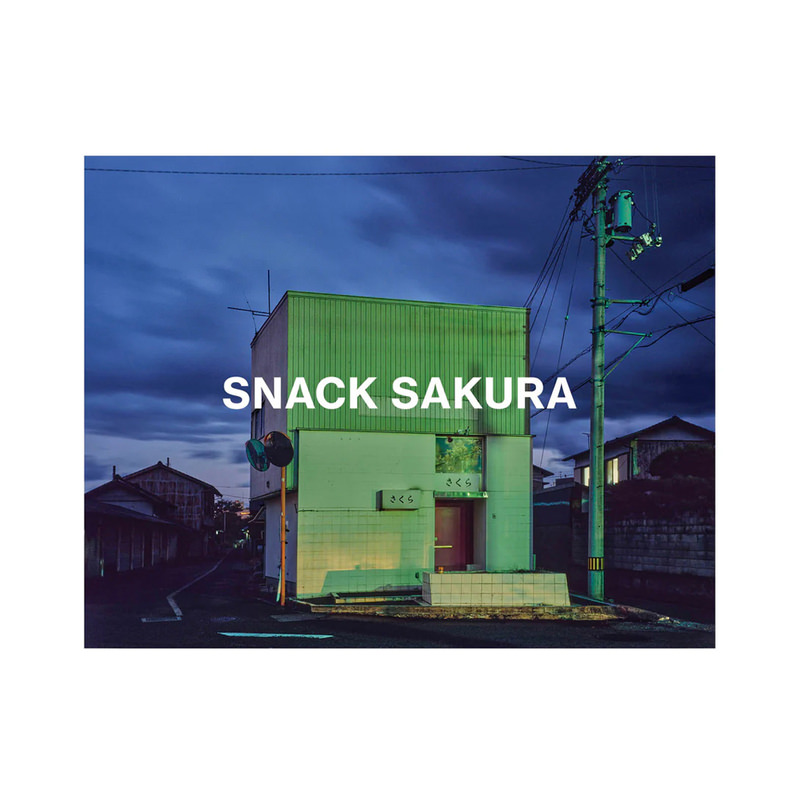Greg Girard: Snack Sakura
Anyone who knows Japan is aware of a particular type of drinking establishment called a snack. They are found all over the country, in both large cities and small towns. Typically, they consist of a counter with a few stools, perhaps a booth or two, and are usually presided over by a middle-aged woman—the mama—or, less often, by a man, the master. The customers tend to be regulars. Unlike a regular bar where a first-time customer simply walks in and sits down, the etiquette in a snack requires a newcomer to first ask the mama for permission to enter. The entertainment, if it can be called that, apart from a simple drink menu, consists of conversation with the mama, chatting with other customers, and karaoke. At the time of writing, these establishments are considered the least fashionable places in the country to have a drink.
Some years ago, while traveling in Japan, Greg Girard noticed that every town seemed to have a snack named “Sakura.” Sakura, or cherry blossom, is such a common name for a business that it might even be considered unimaginative—though in a way, that fits the unfashionable nature of these places. It really did seem like every town had one, and upon checking with the All Japan Snack Owners Association, he found that, indeed, among their members, Snack Sakura was the most common name. Consequently, he decided to try to visit and photograph as many of them as possible, traversing the country from Okinawa to Hokkaido.
At first, he simply stumbled upon Snack Sakuras without actively seeking them out. But once he resolved to actually locate them, things became considerably more challenging. Many of these establishments lack phone numbers or any web presence. For those that do have such details, by the time he arrived, he discovered that they had changed their names, the building had been torn down, or they had closed and never reopened. Nevertheless, little by little, he made headway. After six years of traveling across the country, he had photographed snacks named “Sakura” in more than half of Japan’s forty-seven prefectures. “Snack Sakura” reveals not an entirely “hidden” world of snacks, but rather one that only comes into view when observed from a particular angle.
About the Author
Greg Girard, a Canadian photographer born in 1955, has dedicated a significant portion of his career to exploring Asia. For over forty years, his work has delved into the social and physical changes occurring in Asia, with a particular focus on its bustling metropolises. He has produced a number of photographic books. In 2014, his book City of Darkness Revisited brought back an early collaboration with co-author Ian Lambot, serving as an updated version of their groundbreaking work, City of Darkness: Life in Kowloon Walled City (Watermark, 1993). While based in Shanghai from 1998 to 2011, he produced the photographic monograph Phantom Shanghai (Magenta, Toronto, 2007), which, with a foreword by novelist William Gibson, captures the rapid and sometimes turbulent transformation of Shanghai at the start of the 21st century. The Independent (UK) even named Phantom Shanghai one of the top ten photographic books ever produced. His other titles include Under Vancouver 1972-1982 (Magenta, Toronto, 2017); HK:PM. Hong Kong Night Life 1974-1989 (AsiaOne, Hong Kong, 2017); Hotel Okinawa (The Velvet Cell, Osaka, 2017); Hanoi Calling (Magenta, Toronto, 2010); and In the Near Distance (Kominek, Berlin, 2010), a collection of early photographs taken in Asia and North America between 1973 and 1986. In 2012, the International Centre of Photography in New York showcased his series “Half the Surface of the World,” which examined U.S. military bases and their host communities throughout Asia. His work is included in prominent collections such as the National Gallery of Canada, the Art Gallery of Ontario, the Vancouver Art Gallery, M+ Museum Hong Kong, among other public and private collections. His photographs have also appeared in publications like National Geographic Magazine, the New York Times Magazine, Time, Fortune, and the Sunday Times Magazine (UK). He is represented by Monte Clark Gallery in Vancouver.

